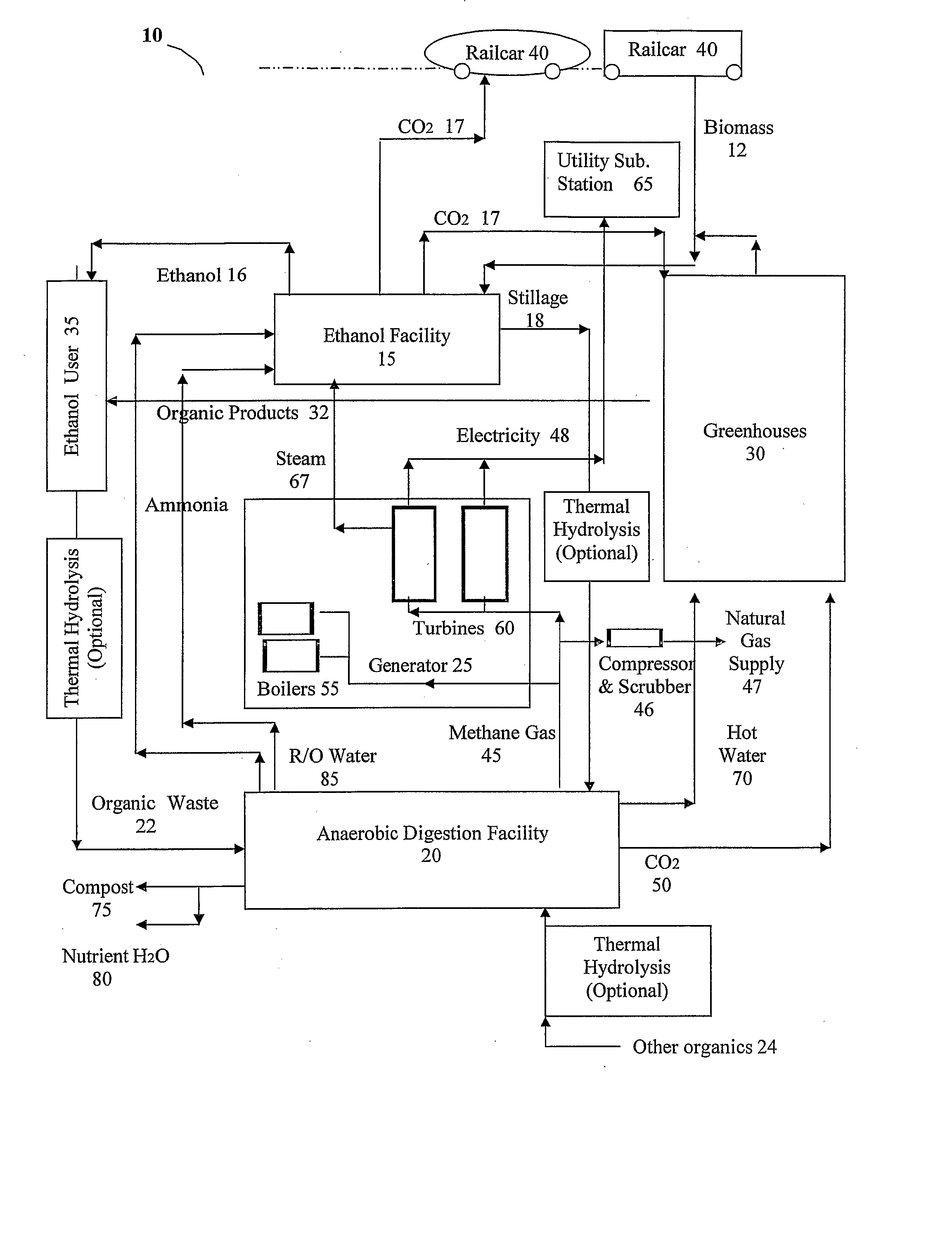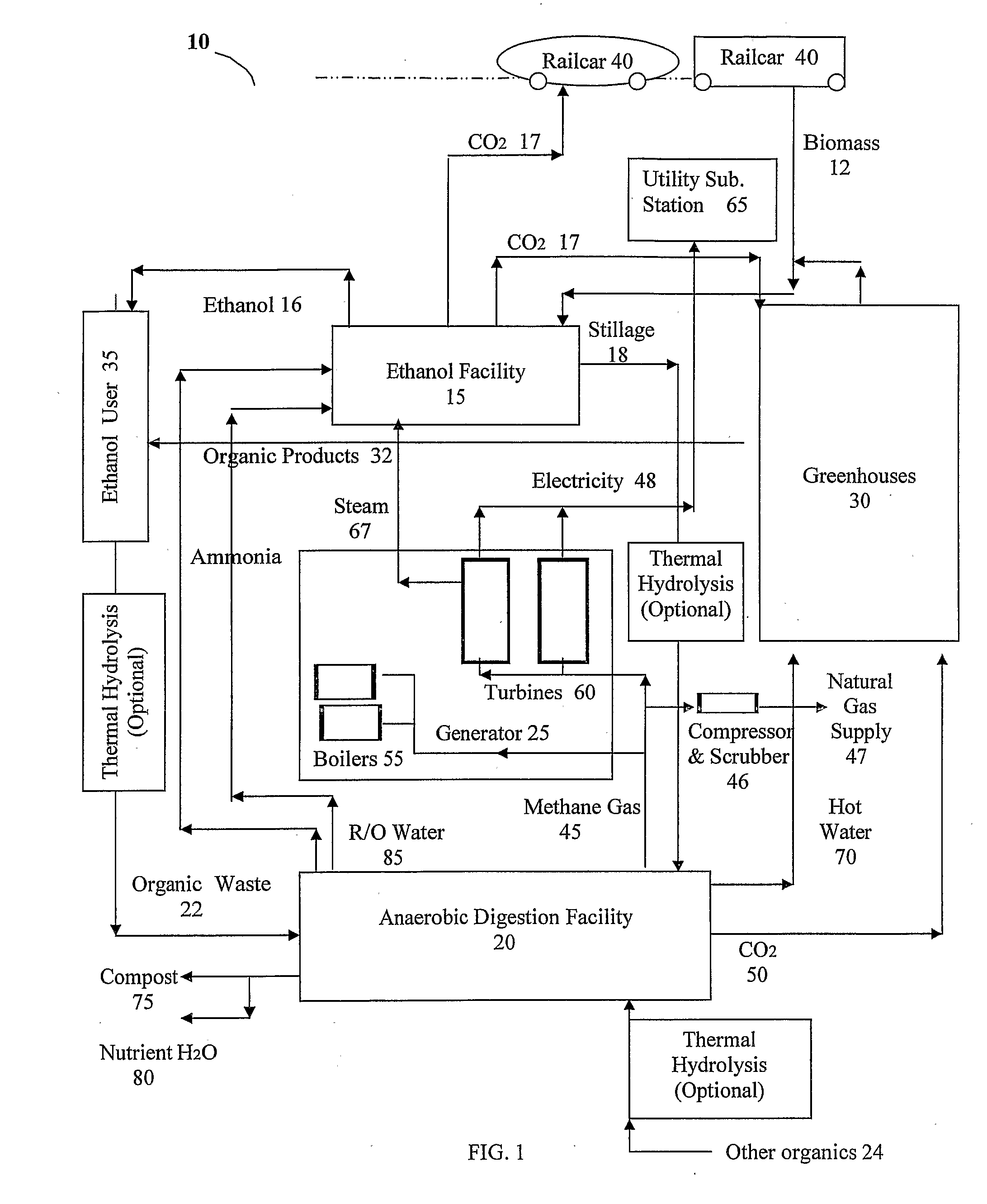Self-Sustaining and Continuous System and Method of Anaerobically Digesting Ethanol Stillage
a distillery and stillage technology, applied in the field of anaerobic digestion, can solve the problems of waste of various other by-products of anaerobic digestion, high capital and operation costs and energy demands associated with separating, evaporating and treating whole stillage, and exceeding the chemical oxygen demand (cod) of 100 g/l,
- Summary
- Abstract
- Description
- Claims
- Application Information
AI Technical Summary
Benefits of technology
Problems solved by technology
Method used
Image
Examples
Embodiment Construction
[0021]FIG. 1 depicts a synergistic system of anaerobically digesting ethanol stillage and using by-products thereof, the system 10 comprising an ethanol producing facility 15, an anaerobic digestion facility 20, a generator 25, a greenhouse 30, and an ethanol user 35.
[0022] To synthesize ethanol, biomass 12 such as sugar crops (i.e. sugar cane, sugar beets), starch crops (i.e. corn, grain, wheat), or cellulosic materials (i.e. crop residues, municipal solid waste, wood) are transported via railcar 40 or any other form of transportation from various sources and milled or otherwise broken-down and prepared for fermentation and distillation in ethanol producing facility 15. Greenhouse 30 may also produce and supply the necessary biomass, in part or in whole, for the production of ethanol at ethanol producing facility 15. Generally, the process of producing ethanol typically involves converting biomass 12 into sugars by hydrolysis and then fermenting the sugars to produce ethanol. Beca...
PUM
| Property | Measurement | Unit |
|---|---|---|
| COD | aaaaa | aaaaa |
| temperatures | aaaaa | aaaaa |
| composition | aaaaa | aaaaa |
Abstract
Description
Claims
Application Information
 Login to View More
Login to View More - R&D
- Intellectual Property
- Life Sciences
- Materials
- Tech Scout
- Unparalleled Data Quality
- Higher Quality Content
- 60% Fewer Hallucinations
Browse by: Latest US Patents, China's latest patents, Technical Efficacy Thesaurus, Application Domain, Technology Topic, Popular Technical Reports.
© 2025 PatSnap. All rights reserved.Legal|Privacy policy|Modern Slavery Act Transparency Statement|Sitemap|About US| Contact US: help@patsnap.com


